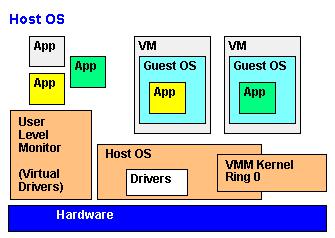It's a computing truism that when it comes to delivering the fastest possible speeds with high-performance computing (HPC), you must use native computing instead of virtualization. Recent studies have shown that, in some configurations, VMware's vSphere can actually deliver faster performance than native computing.
Believe it or not, with the right tuning, architecture, and workloads, some jobs will run faster VMware vSphere virtualization than native systems.In one recent study, which will be described in detail at VMWorld in San Francisco in late August, Edmond DeMattia, Senior Virtualization Architect at Johns Hopkins University's Applied Physics Laboratory, will show how a vSphere implementation delivered better results than running on native hardware.
DeMattia found, while running large-scale, Monte-Carlo simulations [a kind of mathematical risk analysis], that the resources of independent Linux and Windows HPC grids when bound together into a 2,720-core, fully virtualized, HPC platform decreased run-times by an order of magnitude and in one specific use case realized a 2.2-percent performance increase over its native hardware configuration.
This isn't the first such study. In 2009, HP ran some benchmarks in which vSphere virtualization proved faster than native hardware (PDF Link) on the DayTrader performance benchmark with WebSphere. DayTrader, which is part of Apache Geronimo, the open-source Java Enterprise Edition (EE) 6 application server,is a benchmark application that simulates an online stock trading system.
The HP benchmarking showed that with the right configuration of CPU cores, a virtualized environment exceeded the performance of physical environment in 2 cores and 4 cores configurations by about 4-percent and 6-percent respectively. In other configurations, thevirtual performance, with 1 core, 6 cores, and 8 cores proved to be, respectively, 5-percent, 5-percent and 10-percent slower.

In short, while virtualization can speed processing up, it doesn't just magically make things better. Without the right architecture and tuning, virtualization will not deliver performance benefits.
In a more recent study, albeit one by VMware, the company found that vSphere 5.1 on a 32-system Linux cluster running the open-source big data program Hadoop on a single virtual machine (VM) per server showedperformance that was close to native performance. Close, but no cigar.
However, by partitioning each host into two or four virtual machines, they were able to get significantly better performance. With two VMs, VMware found that the overall benchmark results with an 8 Terabyte dataset was almost as fast with native hardware,and with 4 VMs, the virtualized approach was actually 2-percent faster (PDF Link).
That may not sound like much, but when you're working with Big Data, that's a significant speed increase. Better still, it may also mean that you won't need to pay for as many physical servers to achieve the best possible results.
What all this means for you and your enterprise is that rather than just assuming that your HPC application needs can best be served by native hardware, you need to evaluate other, virtualization-based solutions to find the best match of performance, cost, and technology.
Related Stories:
PREV: Destiny Server and Update Status
NEXT: sys.servers (Transact-SQL) - SQL Server | Microsoft Docs